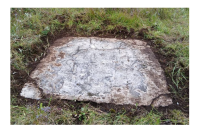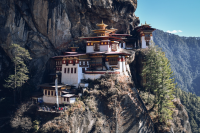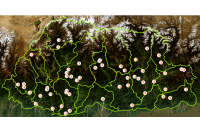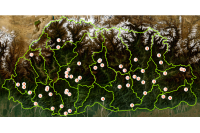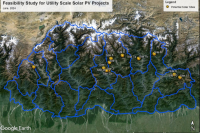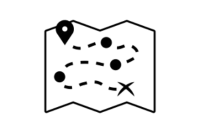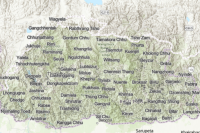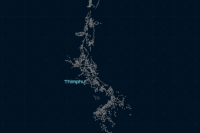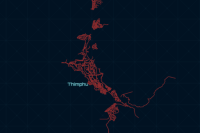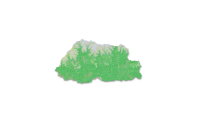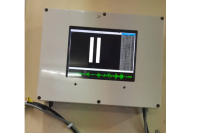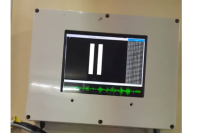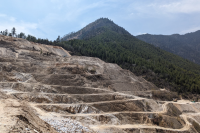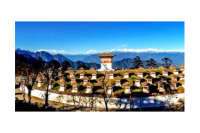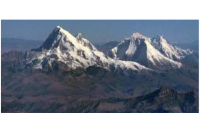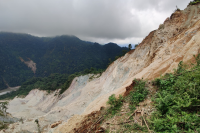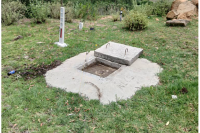Location
National Land Commission Secretariat
GPS Stations (First Order) Category: Open
The dataset consist of horizontal and vertical coordinates which are very accurate to the cm level in absolute terms. These are used as control coordinates at surveying level control coordinates.
National Land Commission Secretariat
Education Centers - Schools Category: Open
The Education Centers dataset contains comprehensive information about educational institutions, including schools, colleges, and universities. It typically includes data such as institution names, addresses, contact information, number of students, etc.
Keywords: [#school#education#college#student]
National Land Commission Secretariat
Zero Order Stations Category: Restricted
The dataset consist of horizontal and vertical coordinates which are very accurate to the mm level in absolute terms. These are used as control coordinates in geodetic reference frame.
Keywords: [#zero order#station]
Department of Culture and Dzongkha Development
Registered Heritage sites of Bhutan Category: Open
This data contains 198 registered Heritage sites out of 200+ Registered heritage sites.
Keywords: [#member agency#heritage site#cultural preservation#lhakhang]
Department of Energy
Hydropower Components Category: Restricted
This point data provides the location of the existing, under construction and planned hydropower project dams, powerhouse and tail race outlets.
Keywords: [#Hydropower Plant#Dams#Structure#PowerHouse#Tail Race Outlet]
Department of Energy
Power System Master Plan 2040 Category: Restricted
This data provides the location of the 155 planned hydropower projects under Power System Master Plan 2040. It contains the planned dam, reservoir, waterway and powerhouse.
Keywords: [#PSMP 2040#Planned hydropower projects]
Department of Energy
Potential Solar Sites Category: Restricted
This data provides the potential utility scale solar PV sites in Bhutan
Keywords: [#Solar Sites#Renewable Energy#Energy]
National Land Commission Secretariat
Trek routes Category: Open
The dataset comprises trek routes in Bhutan, surveyed since 2017 using Handheld GPS devices with a 10-meter accuracy. These routes serve tourists, trekkers, hikers, and mountain bikers, facilitating outdoor exploration. The primary objective is to develop guide maps and apps for user convenience. While some routes have undergone feasibility studies, others require further ground validation. the dataset offers a resource for adventure enthusiasts exploring the diverse landscapes of Bhutan.
Keywords: [#trek route#trek name]
National Land Commission Secretariat
Waypoints Category: Open
The waypoints dataset for trek routes in Bhutan offers crucial geographic reference points collected using handheld GPS devices, aiding trekkers in route planning, navigation, and exploration. These waypoints serve to enhance the outdoor experience by coordinates and facilitating the discovery of scenic attractions, cultural sites, and natural landmarks along the trekking routes.
Keywords: [#trek#waypoint#elevation]
National Land Commission Secretariat
Geographic Names Standardized Category: Open
This data contains the standardized village names in Bhutan achieved through a collaborative effort led by the Department of Local Governance and Disaster Management (DLGDM), with participation from key stakeholders including the National Land Commission Secretariat (NLCS), Department of Civil Registration and Census (DCRC), Department of Culture and Dzongkha Development (DoCDD), and the Election Commission of Bhutan (ECB).
Keywords: [#standardized#village#dzongkhag]
National Land Commission Secretariat
Geographic Names Unstandardized Category: Open
This data contains the unstandardized Geographical names in Bhutan which was compiled by the Geoinformatics division with the help of Topographic division of NLCS through collaborations with LGs (Local governments) and local communities.
Keywords: [#unstandardized#dratshang#land mark#village#tsamdro#chiwog#gewog#lhakhang#school#lake#hill#goenpa#farm#town#grazing land#guest house]
Department of Geology and Mines
Source Monitoring Station Category: Open
The establishment of the earthquake monitoring station commenced in 2015 and was successfully completed in 2019. Its primary objective is to disseminate crucial earthquake-related information to enhance public awareness and preparedness. Recently, the Department of Geology and Mines (DGM) has been processing waveform data to verify earthquake occurrences. This analysis plays a vital role in generating a seismicity map, which helps identify regions prone to seismic activity. Furthermore, these efforts contribute to delineating possible active faults within the country, strengthening the understanding of Bhutan’s seismic landscape and supporting disaster mitigation strategies.
Keywords: [#Geophysics#Earthquake#station]
National Land Commission Secretariat
Land Use Land Cover 2020 Category: Open
The Land Use Land Cover (LULC) 2020 map of Bhutan highlights major land cover types, with forests dominating at 69% (a slight decrease from 2016). Other significant categories include Snow and Glacier (4.83%), Shrubs (4.11%), and Alpine Scrubs (8.89%, up from 3.39% in 2016). Minor covers include agriculture (2.96%), water bodies (0.61%), and built-up areas (0.25%). The map has an overall accuracy of 87% (kappa 0.853).The Sentinel-2 imagery, acquired from ESA's Copernicus Open Access Hub, underwent several pre-processing steps. The image classification was carried out using random forest technique using the e-cognition software.
Keywords: [#lulc#agriculture#built up#forest#grassland#barren land#glacier#snow#water#landslide#vegetation#meadow]
Department of Geology and Mines
Dzongkhag Intensity Meter Station Category: Open
To monitor and assess ground shaking intensity at specific sites during an earthquake, intensity meters are installed in every Dzongkhag. These meters detect seismic activity to support post-disaster analysis. Stations are primarily located in populated areas to facilitate effective response and relief measures in regions prone to severe damage.
Keywords: [#Earthquake Station]
Department of Geology and Mines
Gewog Intensity Meter Station Category: Open
To effectively monitor and assess the intensity of ground shaking during seismic events, intensity meters have been strategically installed across all gewogs, with the exception of four: Soe and Lingzhi in Thimphu Dzongkhag, and Laya and Lunana in Gasa Dzongkhag. These instruments are designed to detect and record seismic activity in real time, providing critical data that supports detailed post-earthquake analysis and damage assessment.The placement of these stations is prioritized in densely populated or high-risk areas to enhance situational awareness during emergencies. By capturing localized intensity measurements, they play a vital role in guiding timely and informed response actions, facilitating the coordination of relief efforts, and strengthening disaster preparedness in regions susceptible to significant seismic impact.
Keywords: [#Geophysics#Earthquake#station#gewog]
Department of Geology and Mines
Location of Mines in the Country Category: Open
Bhutan's mining sector primarily extracts industrial minerals like limestone, dolomite, gypsum, marble, ferro-silicon grade quartzite, iron ore, talc, and various construction materials. Due to favorable geological formations and easier market access, the majority of mines and quarries are concentrated in the southern foothills and lower Himalayas, with the central and northern high-altitude regions remaining largely inactive. The predominant extraction method is surface mining. Bhutan's mining policies are uniquely designed to balance economic prosperity with environmental preservation and social equity, aiming to promote in-country value addition and align the sector with the nation's development philosophy.
Department of Geology and Mines
Location of Quarries in the Country Category: Open
Bhutan's mining sector primarily extracts industrial minerals like limestone, dolomite, gypsum, marble, ferro-silicon grade quartzite, iron ore, talc, and various construction materials. Due to favorable geological formations and easier market access, the majority of mines and quarries are concentrated in the southern foothills and lower Himalayas, with the central and northern high-altitude regions remaining largely inactive. The predominant extraction method is surface mining. Bhutan's mining policies are uniquely designed to balance economic prosperity with environmental preservation and social equity, aiming to promote in-country value addition and align the sector with the nation's development philosophy.
Keywords: [#mining#quarry#location]
National Land Commission Secretariat
Mountain Passes Category: Open
his dataset contains point features representing mountain passes in Bhutan. Each pass is identified by a unique ID (OBJECTID) and name (passname), with elevation values (height) recorded in meters. The data supports topographic visualization, elevation profiling, and spatial analysis of high-altitude transit routes.
Keywords: []
National Land Commission Secretariat
Mountain Ranges Category: Open
This dataset contains line features representing major mountain ranges across Bhutan. Each range is identified by a unique field ID and range name, with general location coordinates provided for spatial context. The data supports topographic visualization, landscape analysis, and thematic mapping of Bhutan’s physiographic zones.
Keywords: []
Department of Geology and Mines
Landslide Inventory of Samdrupjongkhar Dzongkhag Category: Open
Samdrup Jongkhar Dzongkhag, situated in southeastern Bhutan, is highly prone to landslides due to its fragile geology, high monsoon rainfall, and increasing infrastructure development in steep terrain. Recognizing its vulnerability, field validations were carried out over two consecutive phases. The first phase, conducted in 2021-2022, was limited in coverage due to logistical constraints. A more targeted second phase (2022–2023) focused on areas with significant impacts on settlements and infrastructure.Out of the 11 gewogs, landslide data were collected from 8 gewogs, with Dewathang Gewog accounting for the highest share (35%) of the total. Field verification showed that 87% of the landslides are active, and the majority are located along roads, directly affecting transportation and nearby communities.The primary triggering factors include road undercutting, intense rainfall, and fragile geological conditions. The landslides are mainly composed of phyllite, shale, siltstone, coal, gneiss, and quartzite, rock types that are often highly weathered, fractured, and susceptible to failure, especially during monsoon periods.Although validations were conducted over two phases, full coverage of the Dzongkhag was not achieved due to time, resource limitations, and difficult terrain. The current inventory emphasizes high-impact areas, while remote or less accessible regions remain unassessed, highlighting the need for future comprehensive risk mapping and mitigation planning.
Keywords: [#Geohazards]
Department of Geology and Mines
Landslide Inventory of Samtse Dzongkhag Category: Open
Samtse Dzongkhag, located in Bhutan’s southern foothills, is among the most landslide-prone regions in the country due to its fragile geology, intense monsoon rainfall, and increasing anthropogenic activities. Geologically, the area lies within the tectonically active Siwalik and Lesser Himalayan zones and is traversed by major fault systems, including the Main Frontal Thrust (MFT) and Main Boundary Thrust (MBT), as well as numerous local faults and folds. These structural features have fractured and deformed the rock mass, which is primarily composed of highly to completely weathered phyllite, quartzite, sandstone, and siltstone, all of which are weak and highly susceptible to failure when saturated.With annual rainfall often around 4,000 mm, coupled with widespread slope disturbances from road construction, riverbank erosion, deforestation, and settlement expansion, landslides have become a recurring hazard. Field validation confirmed that 9 out of 15 gewogs, particularly Samtse and Phuentshopelri, are severely impacted. A total of 59 landslides were documented, most of which remain active and are concentrated along thrust zones. Among these, 16 landslides (27%) were identified as critical due to their high vulnerability to settlements and key infrastructure.The study focused on landslides with direct or observable impacts on settlements and infrastructure. Remote or less accessible areas were excluded due to time and logistical constraints but should be included in future assessments, considering the evolving and uncertain nature of landslide hazards.
Keywords: [#Geohazards]
Department of Geology and Mines
Landslide Inventory of Zhemgang Dzongkhag view Category: Open
Zhemgang Dzongkhag, located in central Bhutan, exhibits localized but significant landslide activity, driven by steep terrain, fragile lithology, and human-induced disturbances. Out of eight gewogs, landslide data were collected from three gewogs, with a notable 77% of the events concentrated in Singkhar Gewog, highlighting a high-risk zone in the district.The lithology around the recorded landslides includes gneiss, granite, schist, phyllite, and quartzite, which under the deformed and fractured conditions are particularly vulnerable to failure when saturated by rainfall. These geological weaknesses are compounded by slope modifications from developmental activities.A total of 13 landslides were recorded. Among them, 54% are active, 23% suspended, and 23% dormant, reflecting varying levels of instability. The main triggering factors identified were road undercutting and climatic influences, especially intense rainfall. Two landslides located below Singkhar Primary School and in Laylang under Ngangla Gewog were classified as critical due to their proximity to settlements, school infrastructure, and roads used by commuters.Data were collected from only three gewogs due to limited time and resources. Remote or less accessible areas were not surveyed, and their landslide risk remains undocumented. These areas should be included in future assessments to support comprehensive hazard mapping and mitigation planning.
Keywords: [#Geohazards]
